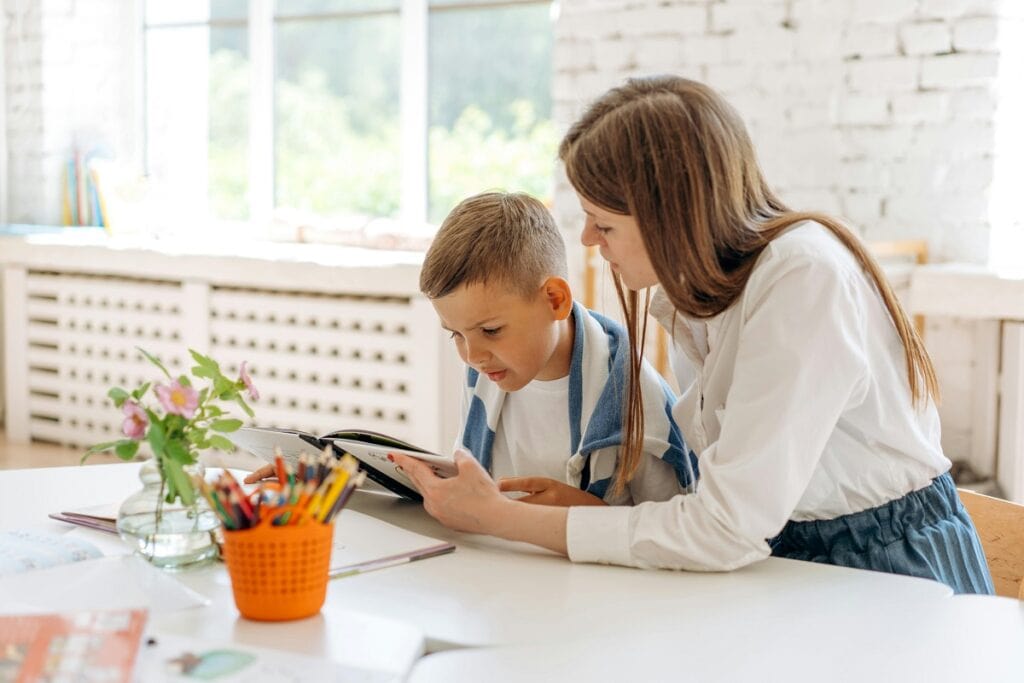Do you know your family tree? If you’re wondering how to address your cousin’s kid, you’re not alone if you’re feeling confused. This post unpacks everything you need to know about your cousins and what they mean to your genealogy.
The family relationship chart
A family chart is also known as a “pedigree” chart. It’s what most people think of when they want to describe their family tree. These charts feature a series of lines originating from a single point, with the lines representing the relationships between parents and their offspring.
The point of origination is the person of interest, and they form the focal point of the entire chart. The chart takes shape by going back in time from the present to the point of origin. It begins with the person the chart builds the structure around, adding their parents on two splits, otherwise called “branches.”
These lines extend to their grandparents, great-grandparents, and so on. The chart lists every family member on an ancestry chart with a direct relationship connecting them to the point of origin and across several generations. So, we can think of it as an ancestry family chart displaying the direct ancestors of a specific individual, otherwise known as their “pedigree.”
First Cousins vs second cousins
First cousins share a common maternal or paternal grandparent. The children of your aunts and uncles are your first cousins. If you have an adopted member in your family, they don’t have any blood relation to you, but as the son or daughter of your family members, they are your cousins.
Your second cousins share a paternal or maternal great-grandparent. You share the same great-grandparents with your second cousins but not the same grandparents. So, understanding second cousins is similar to understanding first cousins. However, the family tree must extend back a generation.
If you have adopted family members, they are not your blood relations, but we can consider them second cousins if they fall into this same section of the family tree.
What is a third cousin?
Your third cousin is the child of the second cousin of your parents. So, your second cousin is the offspring of your parent’s first cousin. Your children and your third cousin’s children are your fourth cousins. Typically, your third cousin is related to a great-grandparent whose brother or sister is your great-grandparent.
So, you and your third cousin share great-great-grandparents. Depending on your family, you might have a personal relationship with your third cousin. Tight family structures residing in the same geographical areas will likely maintain a relationship with their distant family member.
The older great-grandparent or grandparent, as a patriarch or matriarch, keeps the family together. We can mathematically estimate that we have, on average, 190 third cousins (if each family has two to three children). You can have many more third cousins if you have a large family in your common ancestry.
Third cousins may share from 30-230 cM (centiMorgans – a unit of shared DNA) with one other. The typical quantity of DNA shared with third cousins is around 74 cM. However, this can exist on a wide range for several different reasons. A third cousin once-removed is usually a relation not within your generation in your family. So, your third cousin’s child is your third cousin once removed from you.
What is the meaning of “Once Removed?”
A second cousin once removed is your great-great-grandparent’s great-grandchild or your great-grandparent’s great-great-grandchild. So, you’re separated by a single generation (once removed), with the closest common relative being a great-grandparent (yours or the cousin’s).
A cousin twice removed is two generations away from you, i.e., the grandparent or grandchild of a second, third, fourth, cousin, etc. Things get a bit trickier as we start moving down and up generations. This is because the relative you have in common with your parent’s first cousin, for example, would be your great-grandparent or the cousin’s grandparent. So how many “grands” or “greats” do we count?
This is where the “shortest distance” element comes into play.
Your parent’s cousin is your first cousin once removed, not your second cousin. This is because the ancestor you share is your great-grandparent, but that ancestor is a cousin’s grandparent. This represents the shortest distance in generations between the two of you.
This process also works in reverse. Your first cousin’s child is your first cousin once removed. This is because the common ancestor is the child’s great-grandparent, and the ancestor is your grandparent. So, one “grand” means they’re your first cousin.
It’s confusing, right? If you’re still battling to get your head around it, think of it like this. Your parent’s first, second, and third cousins are your first, second, and third cousins once removed. Your grandparents’ first, second, and third cousins are your first, second, and third cousins twice removed.
A first cousin is a cousin born in the same generation as you or the child of your parent’s brother or sister. Your parents are part of the same generation, and so are your cousin and you. The grandchild of your great-aunt or great-uncle is your second cousin. Your great-uncle is part of the same generation as your grandparents, meaning you’re in the same generation as their grandchild.
A cousin once removed is a generation below or above you. For instance, your dad’s first cousin is your first cousin, but they are once removed since there’s a generational gap between you. Another instance of a cousin once removed is your first cousin’s child. Your first cousin is in your generation, so their child is one generation below you.
If my cousin has a baby am I the aunt?
Your cousin’s children are your first cousins once removed. However, their kids are second cousins to your children. Assessing it from a genealogy point of view, your cousin’s child is your first cousin once removed, but you can commonly call them your nephew or niece.
They’ll call you uncle or aunt, and your kids call them cousins, even though they are theoretically second cousins. Many European or Asian countries have special names for their distant cousins, but the English language doesn’t. The United States doesn’t use this cultural distinction either.
Whether you reside in the South, Northeast, or West coast, the specific ‘term’ for “first cousin once removed” doesn’t exist in English. So, many families adopt their names based on a family tradition or who is the oldest instead of through accuracy with genealogy. So, “Uncle Jay” might actually be your first cousin once removed, or more accurately, your nephew.
What does my cousin’s child call me?
Looking at things from a genealogy standpoint, your cousin’s child is your first cousin once removed. However, you might call them your nephew or niece. They might call you uncle or aunt, and your kids would call them cousins, but they are actually your second cousins.
In this case, you can technically call them your first cousin once removed. However, no one officially calls them “First Cousin Once Removed” when writing them a Christmas card. Calling your cousin’s daughter your niece depends on your family tradition in most cases.
So, what do you call your cousin’s kid?
Your cousin’s children are your “first cousins once removed.” If you’re wondering what the relationship is between your cousin’s child and you, it’s your first cousin once removed. Your cousin’s child is not your second cousin, despite the confusion around the topic.
The appropriate name to address your cousin’s child with is your nephew or niece, despite them being your first cousins once removed. The terminology “once removed” indicates how many generations they are away from you. For instance, your cousin’s children are one generation away from you; hence, they’re first cousins “once removed.”
Your cousin’s children are second cousins to your kids. First, second, and third cousins represent different generational levels. First cousins share grandparents, and second cousins share the same great-grandparents.










